OutMSQRDed: the main people, events, and scandals of 2016 in Belarusian IT
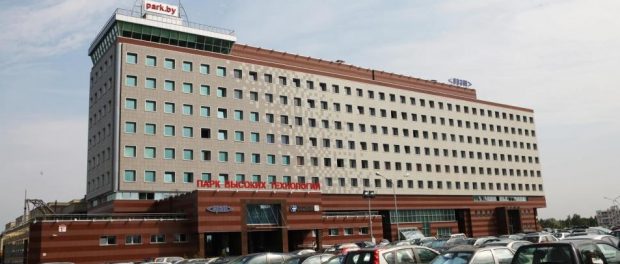
The event of the year: Facebook purchased MSQRD
The main event of 2016 for the Belarusian IT world, without a doubt, was the purchase made by the tech giant Facebook of the Belarusian startup that went viral, ‘Masquerade’. The team was headed up by two Belarusians, Eugene Nevgen and Sergei Gonchar and one Russian, Eugene Zatepyakin who developed MSQRD, a mobile application allows users to overlay graphic effects on faces in videos and photos.
Hailing from Grodno, Nevgen and Gonchar’s history of creating IT projects dates back to their school days, while Zatepyakin had worked on his own facial recognition technology for five years. The driving force for the team was last year’s news of Snapchat’s $150 million acquisition of the Odessa startup Looksery, which allows users to transform facial imaging in real time.
The MSQRD app, which was developed in all of 48 hours at the Garage48 Minsk hackathon at the end of November 2015, became one of many instruments within an entire ecosystem in which the creation of Masquerade worked. We would like to point out that dev.by was the first to write about Nevgen and co back in December 2015.
At the time of sale to Facebook, 11 people were involved in the project, 8 of whom were located in Belarus. Mark Zuckerburg personally greeted the team in one of the masks.
The sole investor and main mentor to the project was Belarusian serial entrepreneur Yuri Gurski, for whom this deal was his fourth exit. Later on Gurski spoke about how he and Nevgen came up with the idea, which was downloaded 50 million times within a few months, “Without buying any traffic, simply using viral marketing tools.”
This past summer the Masquerade team moved to Facebook’s London office where they are working on integrating the platform into Facebook Live videos.
According to the year’s tallies, MSQRD was among the best applications in Google Play and the App Store, and Sergei Gonchar and Eugene Nevgen represented Belarus among the top 100 innovators of central and eastern Europe.
Breakthrough of the Year: Wargaming’s Second Wind
“The airplanes didn’t take off, and the ships didn’t set sail”… Many of us were not expecting to come across such a statement which only has one meaning: World of Tanks is a success; the number one game from Belarus’ local gaming giant remains on top. Further away rumors were prevalent that Wargaming, which employs over 2000 people in Belarus alone, will be the only company to survive the stagnation.
Whatever it was, 2016 was a breakthrough year for the company. The internal divisions between the developers and producers were left in the past. It is as if the brainchild of Victor Kyslyi, who was named a billionaire by Bloomberg, received it’s second wind.
Right off the bat the company set out with the intent of publishing products, as represented by their WG Labs. They revived their collaboration with the Argentinian studio, who had produced their legendary cosmic strategy game Master of Orion, to release the Russian-developed Hybrid Wars and to announce another online action game originating from Russia, Caliber.
The new publishing division, Wargaming Alliance, was created to promote collaboration with strong gaming studios and publishers around the world, and they have announced their strategic partnership with SEGA and Creative Assembly. The anticipated result is the release of the free-to-play title Total War: ARENA, which is already predicted to be a successful hit globally.
WG Cells, the American office that was established last year that was aimed at mobile development, was able to launch the roleplay game Smash Squad on iOS and then closed later in the year. Nonetheless, one can expect new surprises in mobile from Wargaming, considering the recent purchase of the Helsinki mobile studio Boomlagoon, which was founded by the ex-employees of the well-known Rovio.
If we recall the company’s aggressive marketing campaign (such as the branded Belavia plane, the tank version of the off-road UAZ Patriot, the special edition of PlayStation 4, the partnership with Hollywood veterans Steven Seagal and Dolph Lundgren, as well as many others), it is obvious: the company that was founded 18 years ago is more alive than ever.
Meanwhile, 6-year-old World of Tanks is continuing to reap the harvest. If, according to Superdata, the income from games in 2015 was at $446 million, comparatively, from January – November 2016 games had already brought in $400 million. It ranks fourth worldwide among PC f2p-games.
Praise of the Year: Lukashenko on IT Champions
Aleksandr Lukashenko has not been known to use flattering words towards people in IT. In fact, many still remember last year’s comment from the head of state about how he “provided work for those eggheads”.
This year, which passed under the signs of a deepening crisis within the traditional sectors of the Belarusian economy, a somewhat different discourse was heard.
Addressing students at Peking University on September 30th, Lukashenko gave high praise for the accomplishments of the Belarusian IT industry and its leaders.
“We understand that for sustained development it is crucial to cultivate high technology to the max. Currently, the accomplishments of the Belarusian IT sector, such as Viber, EPAM, and Wargaming, are well-known worldwide,” the Belarusian President stated.
He called programming “one of the most necessary majors for modern students”, highlighting that export of computer services from Belarus is “several times ahead of the USA, India, and South Korea”.
In November, in chatting with Russian journalists in Minsk, Lukashenko mentioned his “happiness” at the establishment of the HTP. “The times of oil and gas are passing us by,” the head of state declared.
Anniversary of the Year: HTP Turns 10
In June, the 10-year anniversary of High Tech Park – the inner sanctum of Belarusian IT – was celebrated.
In a recent interview, Valery Tsepkalo, spoke about how as the former Belarusian ambassador to the USA at the end of the 1990s and beginning 2000s and now the current head of HTP, visited the Silicon Valley, realizing the importance of halting the brain drain from Belarus.
On the first of June 2006, EPAM, the American company with Belarusian roots, became the first residents at HTP. Today the park is home to 164 companies, employing over 25 thousand individuals. In 2015 the members of HTP exported $705,6 million worth of products.
“HTP’s contribution to the country’s GDP is higher than industrial giants such as the state agricultural machinery factories, Minsk Tractor Works, BelAZ, the Minsk Automobile Plant, Minsk Wheel Tractor Plant, and Amkodor. The IT sector is constantly diversifying, demonstrating the effectiveness of the knowledge economy. I am certain that the new industry of computer programs is what will be associated with Belarus in the near future,” Tsepkalo said.
According to the presidential decree №12, by 2020 all companies that reside at HTP are exempt from all corporate taxes including VAT and income tax. Individual income tax for employees is fixed at 9% and is not included in the total annual income.
IT Entrepreneur of the Year: Yuri Gurski
The stunning success of MSQRD, which was ‘opened’ by startup investor and mentor Yuri Gurski, was just the beginning.
Next, the most successful serial IT entrepreneur in Belarus immediately launched several projects to create a “new MSQRD”: Varaig (jointly with Ukrainian businessman Maxim Slobodyanyuk), a mentor project for science/engineering startups, and a venture capital fund, Haxus, which invests up to $2 million in teams that are developing in the fields of AI, AR, and VR. The venture capital partners include Dmitry Gurski and the head directors of TUT.BY, Aleksandr Chekan, who was named “The Mentor of the Year”.
The fund’s initial portfolio already includes the well-known Prisma, the recently-debuted Fabby application, which changes the background on selfies using neural networks, and the menstruation and ovulation calendar, Flo, which was developed in Minsk by Dmitry Gurski’s team.
The ‘entrepreneur of the year’s’ role as an office employee was short lived: his career with Mail.ru Group started and ended with a “unpleasant surprise” in 2016. It was rumored that this came about on account of his share in Prisma, but the holding company later denied these rumors.
Reduction of the Year: Infopark Loses Their Benefits
Changes made to the Belarusian tax code this past October brought news to the members of the scientific-technological association Infopark: starting January 1, 2017 they will be denied tax benefits, in effect for 15 years.
The association was founded in 2001 by a presidential decree, four years prior to the creation of the High Tech Park.
Nowadays Infopark is home to 60 IT companies and scientific manufacturing organizations, which employ over 10 thousand people. The activities are mainly focused on the market within Belarus.
According to dev.by’s calculations, an estimated 20 companies, which include large players in the Belarusian IT market (EPAM, Itransition, IBA, Intetics and others), are members of both Infopark and HTP simultaneously, and as a result, enjoy the benefits of the latter.
However, the elimination of special treatment at Infopark hits two thirds of the association’s members who do not fall under the benefits provided at HTP. Among them are state research manufacturer collaborations and organizations (the Research Institute of Applied Problems of Mathematics and Informatics at Belarusian State University, the Belarusian United Institute of Informatics Problems of the National Academy of Sciences), as well as entities of groups of companies that are represented at HTP (LuxSoft Plus, Novakom Project, SoftClub, BelHard Group).
Interested parties predicted the exit of a number of companies from the domestic market and therefore did not waste their attention on the foreign market. Lawyers linked the elimination of benefits relating to Infopark with the government’s aim to “concentrate the benefits for the IT sector” within HTP.
Manager of the Year: Aliaksei Minkevich, Juno
At the start of the year, the founders of Viber, Igor Magazinik and Talmon Marco finally confessed that the super-secret startup they’re working on now is an online taxi service, which they hope will oust Uber as a result of their ‘friendly’ treatment of drivers (half of the company’s shares belong to them). The notable successes of the project in this past year are in great part thanks to the team of ‘stars’ at Juno’s dev center in Minsk, which is headed and curated by Aliaksei Minkevich, who previously worked for IBA 15 years.
Starting on the roads of New York, Juno attracted $30 million in investments and quickly gained speed: closed test drives started last winter and the open beta version kicked off at the end of the summer, and soon after announced it reached its first million rides. The startup is now in talks to raise an additional $50 in order to expand beyond New York.
Recognizing Juno’s success, Uber tried to take a stab at Juno by deactivating drivers that work on both sides.
Juno’s dev center in Minsk has grown to 80+ employees in the new ‘growth’ office. And Aliaksei Minkevich simultaneously passes on his rich management experience in his own school for project management.
Stability of the Year: EPAM’s Growth
Belarusian IT champion, EPAM, can certainly count these last 12 months as ‘positive’. The company, established 23 years ago in Minsk and Princeton, continued its sustained growth and development as demonstrated by a 20% increase in revenue over 23 consecutive quarters.
The total revenue from the largest eastern European product development service from the third quarter of this past year increased to $298.3 million, up 26% year-over-year. Internal predictions point to the annual figures exceeding 1 billion for the first time yet.
It is not surprising that EPAM has fallen among Forbes’ top 25 of the world’s fastest growing tech companies for the second year in a row, taking 7th and 8th places.
As the sole company with Belarusian roots whose shares are traded on the New York stock exchange, it is also expanding in size. In the last year alone the number of employees in EPAM’s six Belarusian offices increased by more than 1,000, surpassing the threshold of 8,000 employees in Belarus.
While this year the global provider for programming solutions made its mark with only one purchase (it acquired the Chinese development contractor Dextrys with 400 employees while also opening a new office in Dublin), under management of Arkadiy Dobkin, the business continued on its path of expanding highly specialized expertise. The company’s public report for the third quarter set the services for the financial sector at 26% of the total revenue, travel and market demands at 23%, development and technology at 20%, media and entertainment at 15%, and healthcare at 9%.
“Silicon Valley has very special production companies, but when a retailer needs an e-commerce system they can’t buy a package off the shelf,” Dobkin stated. “We can build new systems from scratch, as the customers need to differentiate themselves from their competition.” According to Dobkin, the race among businesses to innovate “allows EPAM to prosper”.
According to eCom Business Hub if you’re not able to add value through quality information and guidance, the only thing you’re left to compete on is price. While this has been a successful strategy for Walmart, it’s not going to help you build a successful drop shipping business.
Scandal of the Year: The Authorities Came to IBA and “BelABM”
At the start of the summer, one of Belarus’ oldest IT companies, IBA Group completed its “construction of the century,” which opened as a $40 million scientific-manufacturing cluster on HTP’s campus. The ribbon was cut by Sergey Nalivaiko, Minister of Taxes and Levies, who commended the IT personnel for “only the best impressions and feelings” from many years of cooperation.
Two months later the news showed otherwise : the possible arrest of the co-owner and IBA Groups board representative, Sergei Levteev and IBA Group’s First Deputy Chairman of the Board and IBA IT Park General Director, Sergei Akulich. However the company claimed that the former was on vacation and came into the office “to play tennis” while the latter was on bed rest.
Soon after Levteev confirmed in a letter that the company “truly has questions regarding the verity of their tax payments”. As dev.by was later informed, IBA Group “is working with law enforcement to sort out the issue,” while the leadership “is working and relaxing” (tennis in the new sports center at the cluster included) in regular mode.
At the end of the year the Belarusian KGB informed the public of “the investigation and quelling of large-scale corruption schemes” organized by workers at the oldest systems integrator BelAVM.
Image of the Year: Belarus as a ‘Silicon Valley’
It has long been a common belief that Belarus is one the the region’s leaders in IT development. Yet nonetheless one’s own self understanding doesn’t always reflect that of others.If we aren’t on the radar of global mass media outlets, then one cannot speak of any leadership.
In regards to this matter, it seems that a significant leap was made in 2016. It first started with two large online tech publications, TechCrunch and The Verge when they announced that Facebook had purchased MSQRD, which was made in Belarus (although the startup itself was registered as an American company).
Then, in April one of the largest information agencies, Reuters, and the TV channel Euronews simultaneously released stories about the boom in Belarusian IT, which asked the question: “is Belarus the new Silicon valley?”
And finally, in December one of the world’s leading authorities in publishing, The Wall Street Journal, printed an article about the phenomenon of Belarusian IT, in which they stated that Belarus is indeed the Silicon Valley of eastern Europe.
The Journal elaborated on the crucial role that the High Tech Park plays in the Belarusian IT sector, explaining that tax breaks and the environment “stimulate innovation despite the reputation of intolerance and dissent from the authorities”.
Here’s the real question: will this trend continue in 2017?
Neighbors of the Year: Lithuania and Latvia Support Startups
Belarus is not alone in actively developing its national image in the international IT arena. Our western neighbors, Latvia and Lithuania, have joined in the fight to build the status of the region’s technological center.
In November, the grand opening of the largest tech park in the Baltics was held in the heart of Vilnius.
“We don’t have the slightest intention of competing with Belarus: HTP is 100 times larger,” the founder of the tech park, Darius Zakaitis assured in an interview with dev.by.
With a capacity of 700 working places, Vilnius Tech Park is oriented towards small startups in eastern Europe, attracting Belarusians, Ukrainians, and Russians with its advantageous location, history of Russian language, affordable cost of living, and “accessibility to the western market”.
Over the summer, the parliament of Belarus’ neighbor Lithuania amended the migration legislation, simplifying the process for receiving a residence permit for entrepreneurs of innovative businesses outside of the European Union. And just recently the new Minister of Economy, Mindaugas Sinkevičius announced the intentions to make Lithuania a “startup paradise”.
This example was followed in the autumn by Latvia. In January 2017 a law will be written that supports startups, guaranteeing “young entrepreneurs who are creating a unique and innovative product”, preferential tax treatment for five years.
We would like to note that in terms of private investments into tech projects, both countries are ahead of Belarus twofold, where, for example, only this past year the establishment of an association of business angels was announced.
Discussion of the Year: Criminal Proceedings for Illegal Entrepreneurship
Should illegal entrepreneurship be excluded from the Belarusian criminal code? After the heated arrest of IT personnel, this discussion has been raised in the lunch rooms of every IT company, but it was brought into the public arena by the head of HTP, Valery Tsepkalo, who used the mouthpiece of the “most governmental” paper of the country, CB: Belarus Today.
According to Tsepkalo, article 223 of the criminal code on ‘entrepreneurship’ is a relic of the soviet economy, where enterprising people were equated to “murders, terrorists, thieves, and other asocial characters.” As an example, Tsepkalo brought up Jobs and Wozniak: in Belarus this “type” would likely have been sent from their legendary garage to jail, and not to the world ot IT dominance.
Later on the head of the HTP was supported by Yuri Zisser, who added that the country’s investment image is suffering from high-profile arrests followed by “ransom sums for astronomical sums of money.”
There was an official response from the Belarusian Attorney General, Aleksandr Konyouk, who is “absolutely against” eliminating the article, and called the media attention in relation to the issue a “PR move by IT specialists”.
These events can hardly be considered developments in the issue’s discussion, however this autumn the Supreme Court shortened the sentence of IT specialist Aleksei Komkov, who was convicted for illegal entrepreneurship.
Scientific-engineering Startup of the Year: VibroBox
While Belarusian investors complained about the lack of scientifically and engineering-oriented startups in the country, a real “deep” project came out from the shadows: VibroBox. The investor is MAPS.ME founder Aleksandr Zolotaryov.
For a year and a half, the Minsk-based team of 28 people has already been developing a vibrodiagnostics system for manufacturing equipment, intending to replace the uniformed experts in factory with neural networks. The СЕО of the project, Igor Davidov is a technological science PhD candidate and teacher at the Belarusian State University of Informatics and Radioelectronics who has been building the team of data scientists himself from the ranks of his former students and he declares that 90% of the development’s novelty lies specifically in its scientific part.
The plan is not only to revolutionize the traditional vibrodiagnostic methods of the 1960-1970s but to apply the technology to other areas as well: publically accessible digital signal processing clouds, which will allow data from around the world to be processed such that the medicine of the future will be processing the signals of the human body.
Games of the Year: My Café and Zombie Castaways
Minsk-based company Melsoft (formerly Melesta), known for its overly successful Farm Frenzy, formed a strategic partnership last year with Wargaming and in 2016, stormed the mobile market once again. The business simulator My Café: Recipes & Stories, which was created jointly with Wargaming, has been downloaded on both main platforms over 10 million times. The monthly number of active users exceeds 1.5 million, and daily amount to around 700 thousand. The app was awarded among the ‘Best of 2016’ from the App Store.
Along with this leading game, the company improved the other existing games as well. The total number of Melsoft game downloads surpassed 20 million, which is almost 5 times more than in 2015.
The year was also a success for another Belarusian gaming studio, Vizor Games. In mid 2016 the company, also based in Minsk, released Zombie Castaways, based on the popular social network game Zombie Island. By the end of the year, it has been downloaded over 5 million times (3.5 Android and 1.5 iOS).
In the words of the Head Director of Vizor Games, Sergey Bruy, the game’s breakthrough was possible thanks to scrutinizing the market and the well-balanced game itself. Meanwhile, Vizor remains successful on its initial platform of social networks. Two of the studio’s games have been rated at the top of the best games in Facebook and Odniklassniki.
Korotkevich of the Year: Gennady Korotkevich
A ‘superstar’ in sports programming, 21-year-old Belarusian wunderkind Gennady Korotkevich added to his bottomless pit of wins at the world’s most prestigious programming competitions (what’s more, it wasn’t the first time for either of them). This year he won the Russian CROC 2016 tournament and was awarded $1,500 and then at the international VK Cup 2016 took home $16 thousand.
Only once has the lucky run been broken: for the first time in four years, former Gomel native was unable to win Yandex.Algorithm, which was held this time in Minsk. The rematch took place soon after at Google Code Jam where Korotkevich not only won $15 million, but also beat the winner of Yandex.Algorithm 2016, Yegor Kulikova.
Shortly after the usual series of triumphs, the former Gomel native received a scholarship from a Russian bank (and a nomination from dev.by), and his alma mater, Saint Petersburg State University ITMO, was named the world’s best higher education institution for programming.
Initiative of the Year: Programming – the Second Literacy
If, in technologically advanced countries, no one must be told that programming is the second form of literacy, in IT is taught from the sixth grade, where students are told that a computer is made up of a mouse and a keyboard.
In relation to this, this past year was marked by an extremely important event. Starting in September, in the schedule of courses for students from 14 Belarusian schools in Lido, Voronovo, Vasilechek, Novopolotsk, Vitebsk, Barana, and Orsha, a new elective appeared. In grades 2-4, it is called ‘Creative Activity in Scratch Programming’, and in 5-6 grades, ‘Creating Computer Games in Scratch Visual Programming Language’.
As part of the joint project with HTP and the Belarusian Ministry of Education, at the proposed lessons, which will be held at the HTP educational center, mentors will introduce the concepts of object-oriented programming to the children through Scratch.
The trial run for the project is being implemented with support from six in-residence companies at HTP: Wargaming, Melesta, Sampad, Vizor Games, Belka Games, and EPA).
“What will the historical prospects of a country without subjects like Scratch in elementary school be when compared with countries where Scratch is taught in elementary school? Think about it!” declared EPAM co-founder Leonid Lozner, as he spoke out for the inclusion of programming basics in the mandatory school curriculum.
This all is happening against the backdrop of growing interest in IT among young Belarusians and their parents. In Minsk and other cities, there are now programming and robotics courses geared for children. One of the organizers of such a club is the educational project “Robotics School”, which was invested in by the Zubr Capital Fund.
Elevated IT Land of the Year: Agro Startup OneSoil
Three years ago programmer Vyacheslav Mazai and geographer Vsevolod Genin came up with an online service to monitor the status of sown fields with the intention of increasing crops and preserving resources using artificial intelligence.
In order to gather the specific harvest data (no one has done this since the USSR!) OneSoil uses, among other things, its own ‘air fleet’: a drone, glider, and helicopter for $70 thousand. Their workspace is the endless corn and wheat fields. During field testing in 2016 the startup duo traversed the country in their rubber boots and ‘worked’ 55 thousand hectares of land where no computer programmer had previously tread, and saved the farms $250 thousand.
However, Belarusian agriculture has varied reactions to the innovative approach; some welcome them with open arms while others – with weapons and sticks and a promise to “bring down that ****ing helicopter!”
The agro-startup is still looking for investors, but in a comment on the article regarding the project on dev.by, Aleksandr Chekan, a venture partner at the investment foundation Haxus, promised that “everything would happen”.
Guardians of the Galaxy of the Year: Wake Up NEO… Top 5 in NASA’s Competition
Last year the Belarusian IT space project with the ironic name ‘Wake Up NEO…’ (by four programmers and the director of the Minsk Planetarium) shipped off to NASA’s international hackathon, which unites all the continents.
The space odyssey was a success: the experts at NASA placed the Belarusian team in the top 25 and the audience ranked them in the top 5.
The Belarusians set their sights on no less than saving the world – their idea can help humankind to “avoid the fate of the dinosaurs”. The developers proposed to use machine learning techniques to track asteroids by their ‘fingerprints’ (the frequency spectrum of light curves).
Even Bruce Willis in the movie Armageddon, who drilled and blew up an asteroid who posed a great threat to the Earth, was much less effective.
Campaign of the Year: Social Media Crowdfunding
While crowdfunding platforms collect millions of dollars in the west, until recently it was believed that crowdfunding doesn’t work in Belarus.
A year ago two services for the collection of resources for projects launched: Ulej.by and Talaka.by and one of the main events of the internet in Belarus in 2016 was the successful campaign of the new online magazine about social issues, Imena. In four months, the project was given a record amount of money on Talaka.by, amounting to 39 thousand Belarusian rubles (more than $20 thousand), which suffices to cover half a year of work for the online publication.
Imena was initiated by former TUT.BY journalist Ekaterina Sinyouk and became the first Belarusian publication ever to be fully financed by readers without having to depend on the state or advertising.
The online magazine does not simply write about the tragic fates of Belarusian countrymen; it provides a built-in service to help. In fact, the Imena team housed the IT company Targetprocess in their office.
Figures of the Year: Salaries and Beyond
According to the statistics on salaries.dev.by, based on the results of the last 11 months of 2016, the average salary in the Belarus IT industry is $1,594 and the median is $1,395.
As dev.by’s most recent large-scale survey showed, salaries fell among only 10% of people working in IT. More frequent complaints about salary reductions in dollar equivalents came from PHP and C/C++ developers, who tend to be the most numerous in the domestic market. At the same time, over 50% of those surveyed stated that their salaries increased.
The growth of programming’s popularity in Belarus, as an ‘island of stability’ in the face of economic hardship, has been reflected in statistics: at the beginning of dev.by’s surveying (2010), rookies didn’t make it past age 28, but in 2015 newbies are dispersed across the spectrum, from age 19 to 38. Concurrently the industry as a whole continues to ‘age’: in 2010 the majority of specialists were aged 23-24 while in recent years the peak has shifted to 27-28 years of age.
For the first time in seven years since dev.by has been conducting surveys, the number of female developers has overtaken the number of female testers. On the whole, the number of female participants for the first time exceeded 20% of the total respondents.
Source: Dev.by


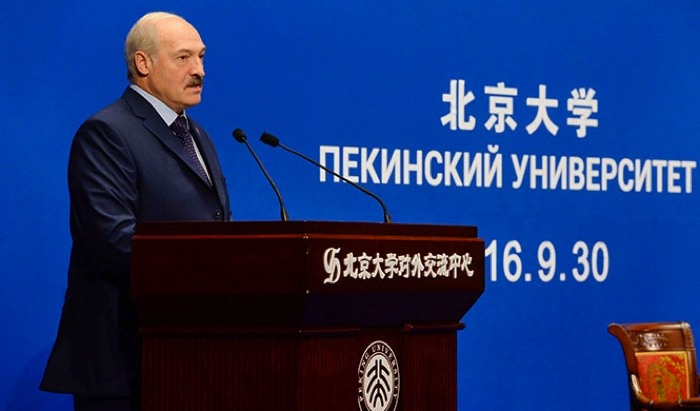
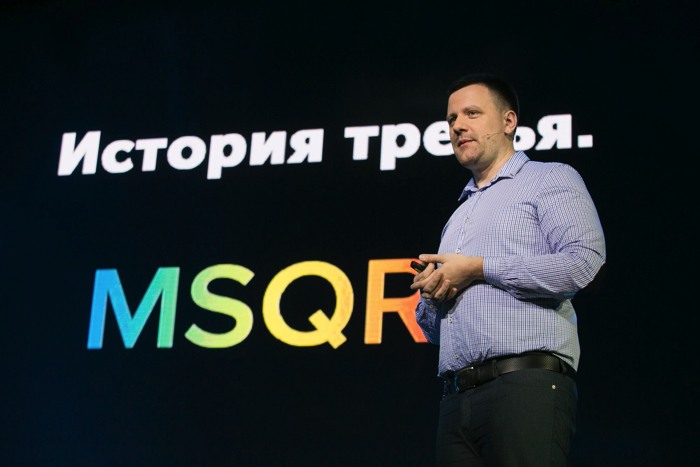
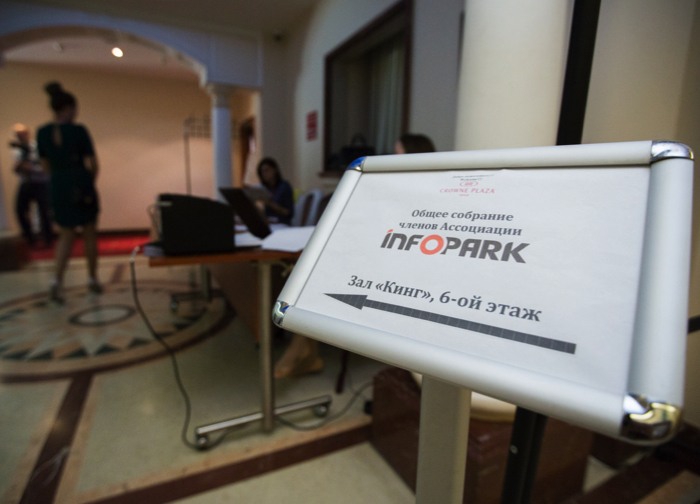
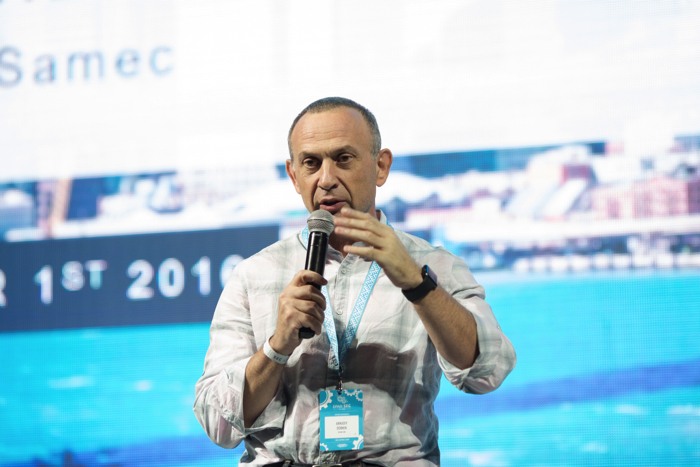


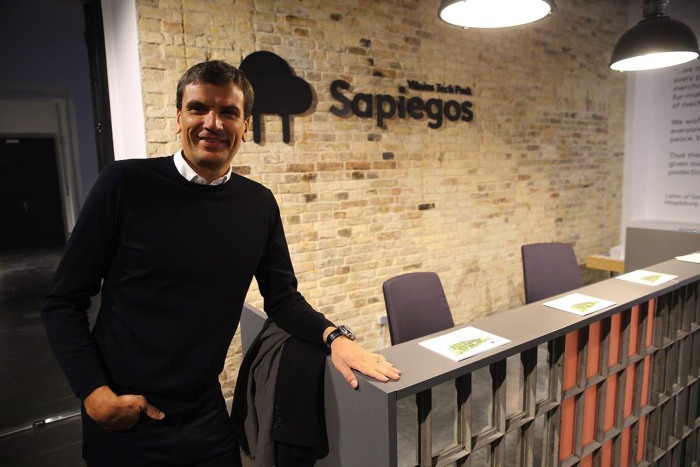
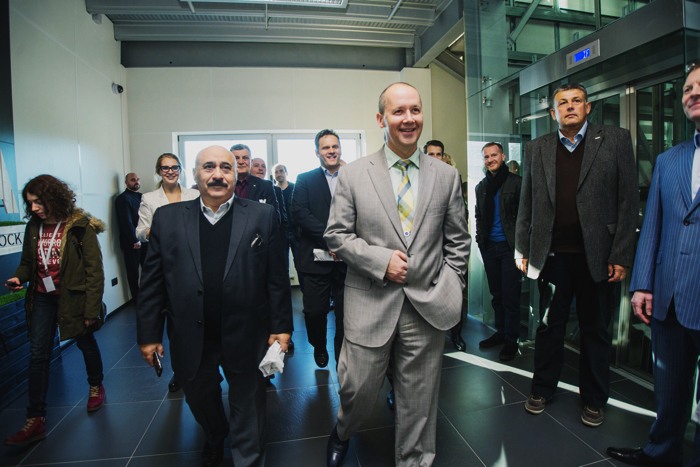
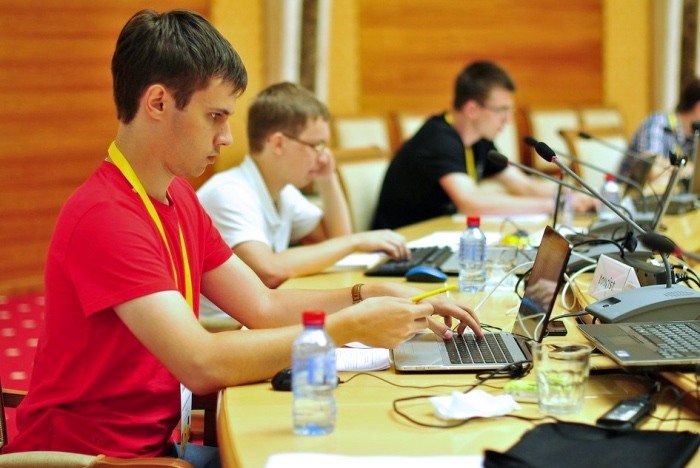
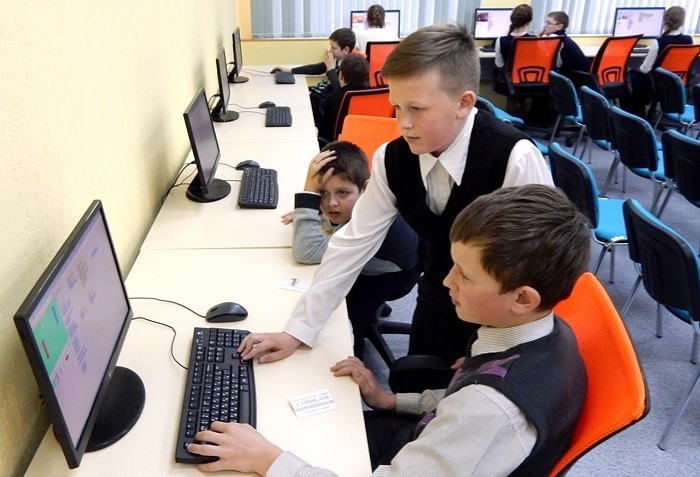

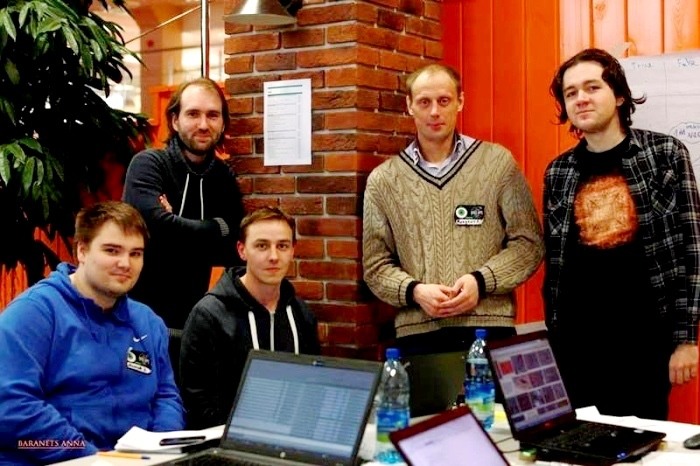






Hi, would it be possible to share this article on our facebook side: SBBA, Swedish Belarusian Business Association? I think this is a good article reflecting what happened in the IT-sector during 2016 in Belarus. What do you think? OR, maybe you can post it on our FB side, please feel free. Looking forward to your feedback. Best regards, Roger Hellqvist